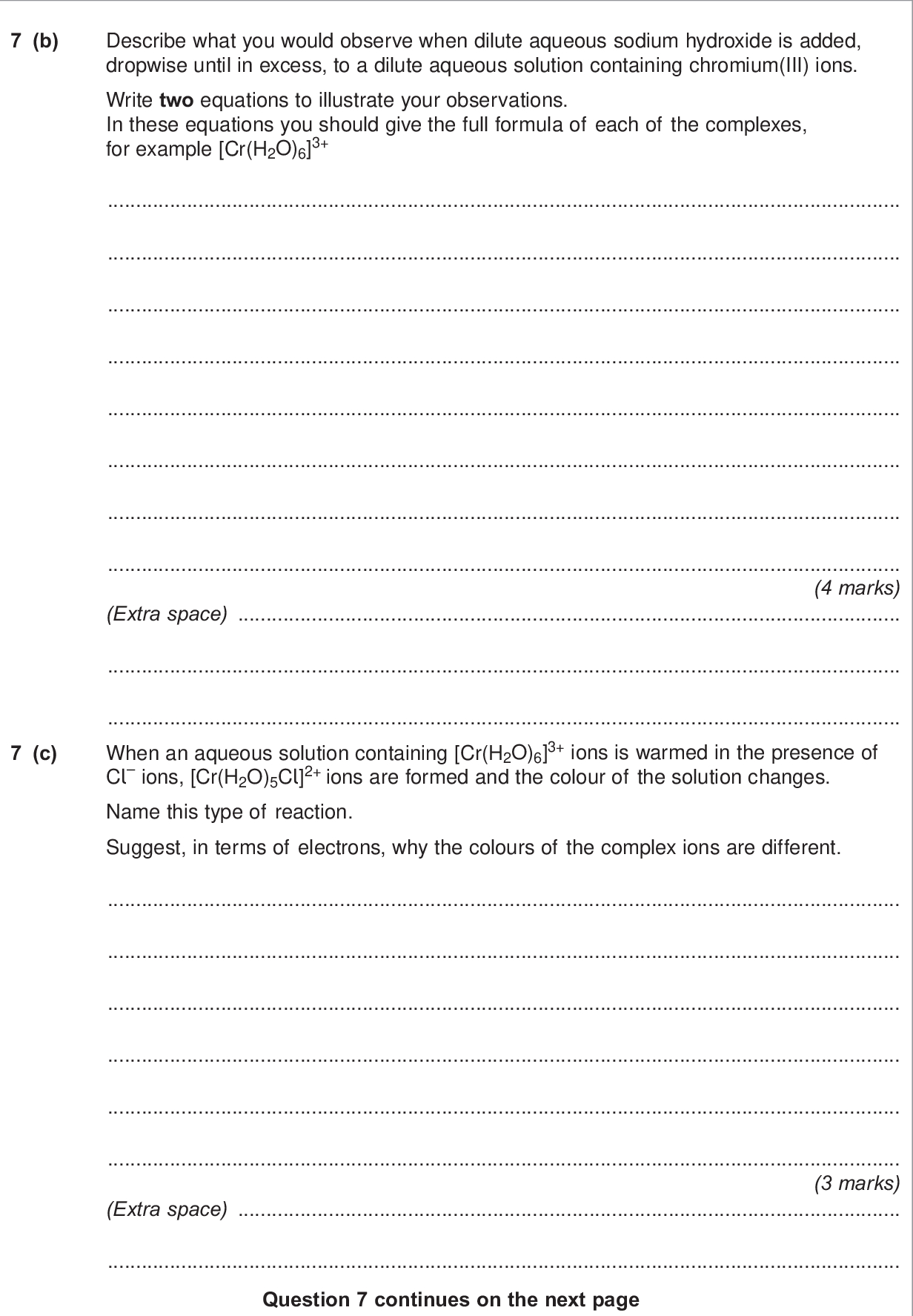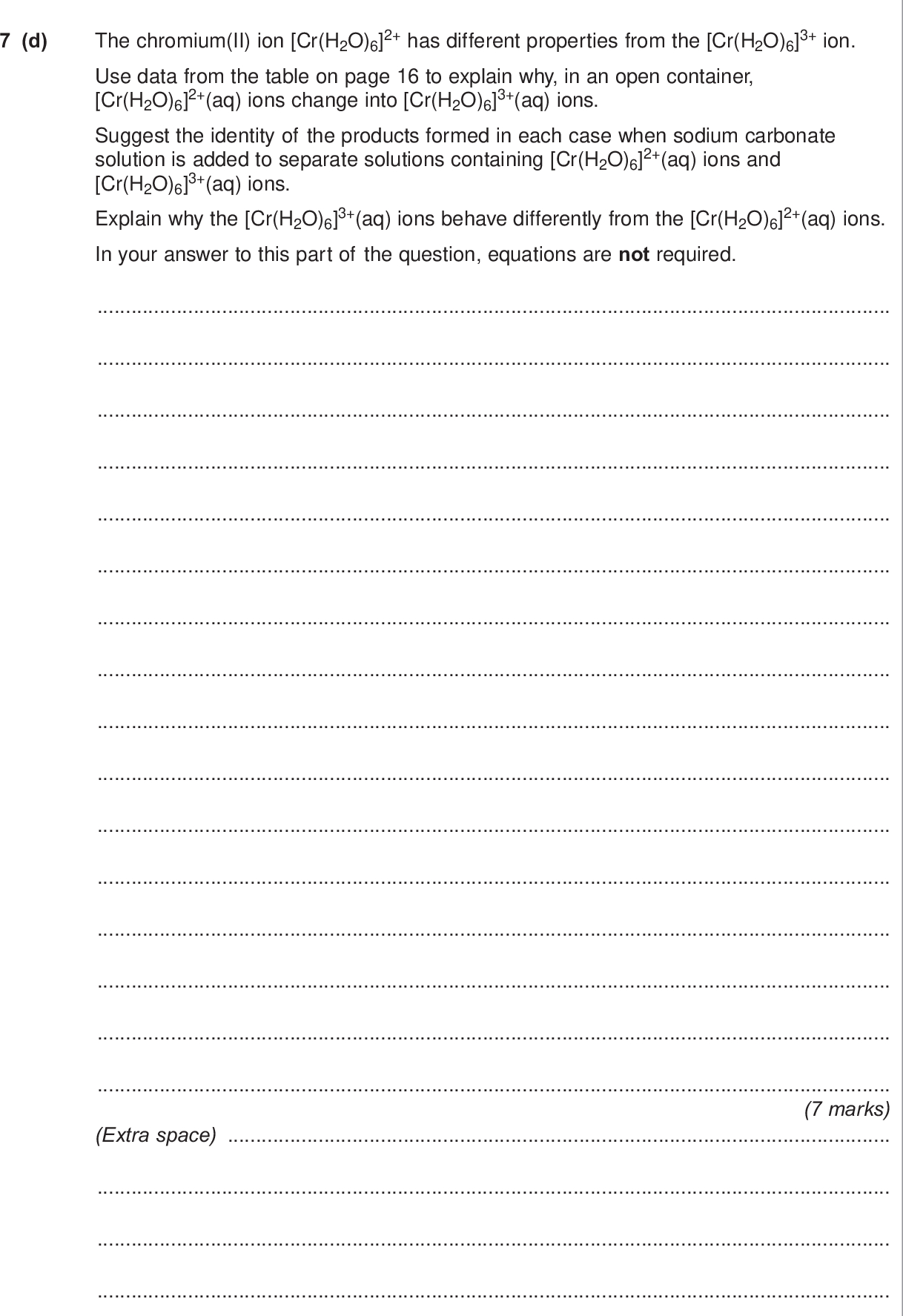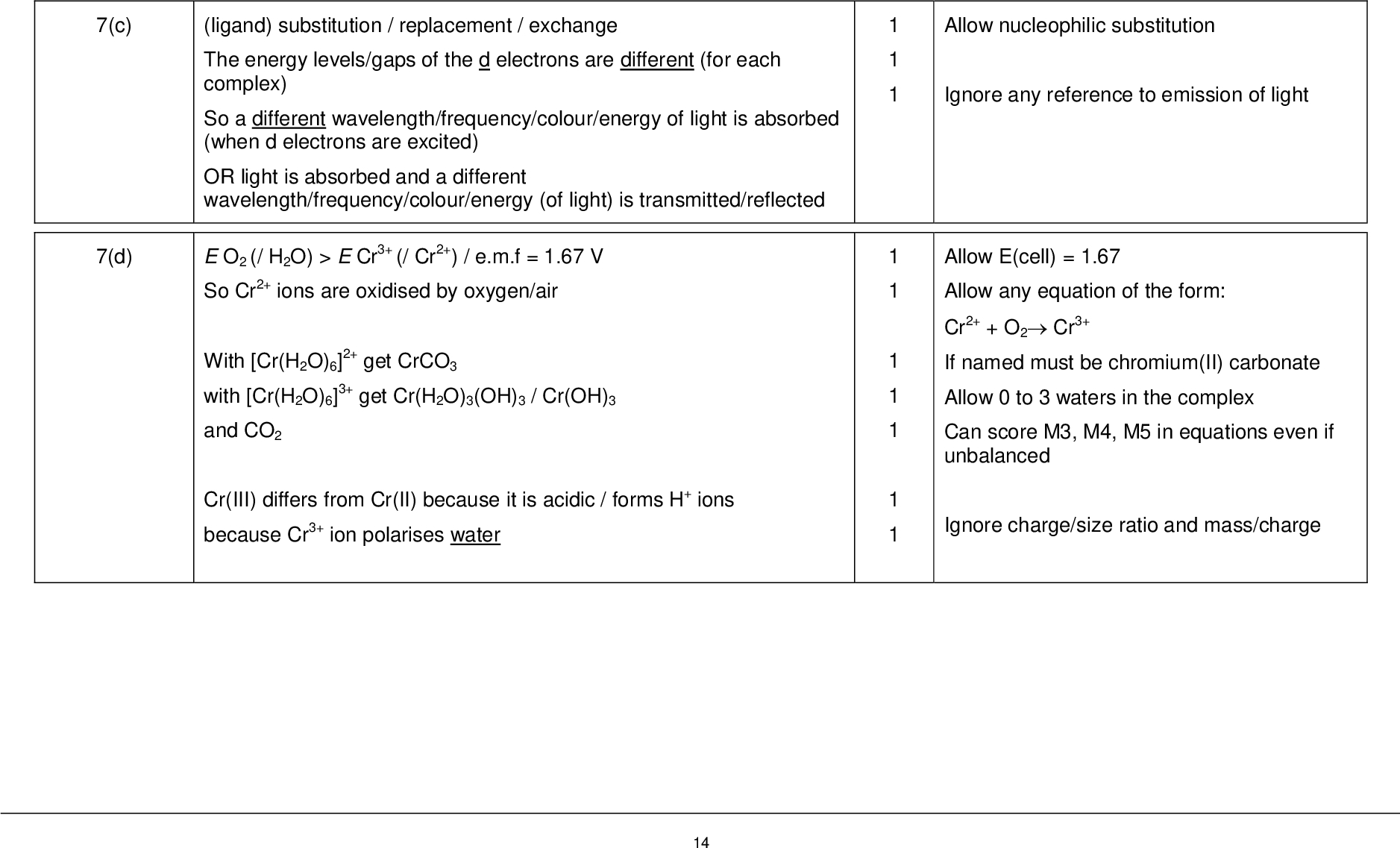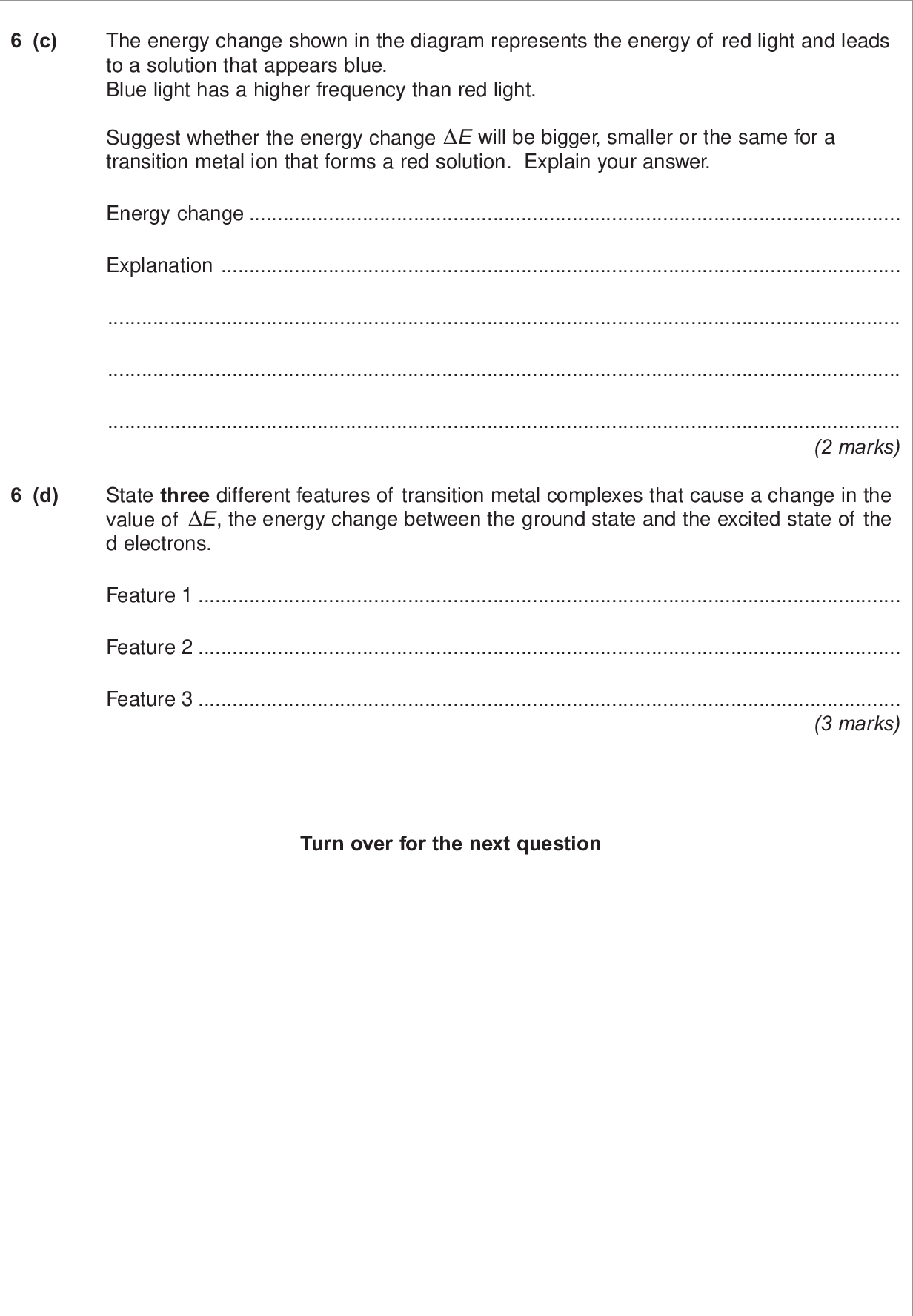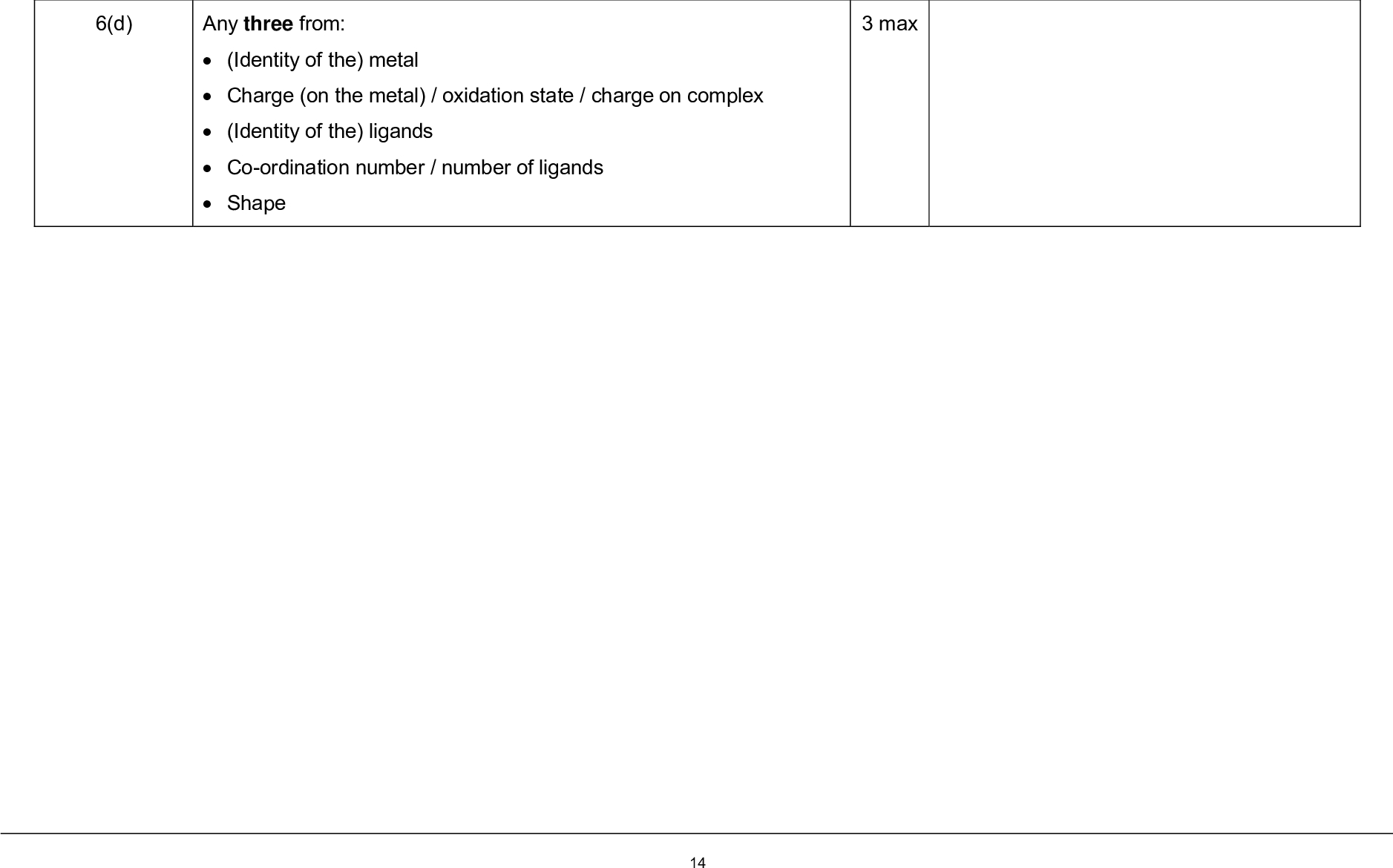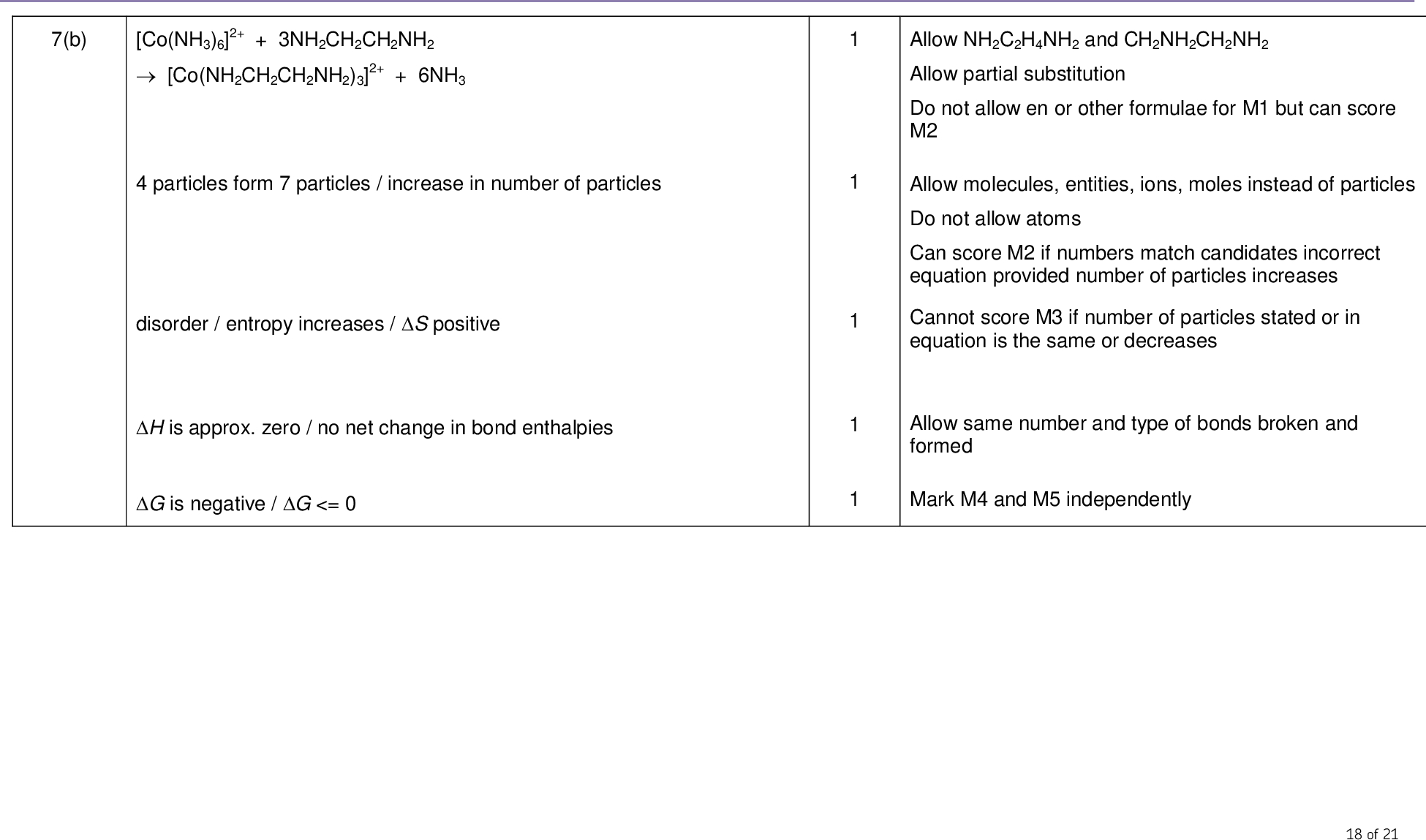

Formation of coloured ions Colour changes arise from changes in 1. oxidation state, 2. co-ordination number 3. ligand. Colour arises from electronic transitions from the ground state to excited states: between different d orbitals. A portion of visible light is absorbed to promote d electrons to higher energy levels. The light that is not absorbed is transmitted to give the substance colour. Changing colour Changing a ligand or changing the coordination number will alter the energy split between the d- orbitals, changing E and hence change the frequency of light absorbed. Ligands cause the 5 d orbitals to split into two energy levels. Co(H2O)6 2+ + 4Cl- [CoCl4 ]2- + 6H2O pink blue [Co(NH3 )6 ]2+ (aq) [Co(NH3 )6 ]3+ (aq) +e- yellow brown Compounds without colour Scandium is a member of the d block. Its ion (Sc3+) hasn’t got any d electrons left to move around. So there is not an energy transfer equal to that of visible light. In the case of Zn2+ ions and Cu+ ions the d shell is full e.g.3d10 so there is no space for electrons to transfer. Therefore there is not an energy transfer equal to that of visible light. O2 In this equation only oxidation state is changing. Co(H2O)6 2+ + 6 NH3 Co(NH3 )6 2+ + 6H2O Pink yellow brown In this equation both ligand and co- ordination number are changing. In this equation only the ligand is changing. How colour arises 5 Equation to learn! This equation links the colour and frequency of the light absorbed with the energy difference between the split d orbitals. E = hv. v = frequency of light absorbed (unit s-1 or Hz) h= Planck’s constant 6.63 × 10–34 (J s) E = energy difference between split orbitals (J) A solution will appear blue if it absorbs orange light. The energy split in the d orbitals E will be equal to the frequency of orange light(5 x1014 s -1 ) x Planck’s constant E in a blue solution = hv = 6.63 × 10–34 x 5 x1014 = 3.32 × 10–19 J N Goalby chemrevise.org Average energy of d orbitals in field of ligands dz2 dx2 – y 2 dxy dxz dyz E Octahedral complex ion Absorption of visible light is used in spectrometry to determine the concentration of coloured ions. method •Add an appropriate ligand to intensify colour •Make up solutions of known concentration •Measure absorption or transmission •Plot graph of absorption vs concentration •Measure absorption of unknown and compare If visible light of increasing frequency is passed through a sample of a coloured complex ion, some of the light is absorbed. The amount of light absorbed is proportional to the concentration of the absorbing species (and to the distance travelled through the solution). Some complexes have only pale colours and do not absorb light strongly. In these cases a suitable ligand is added to intensify the colour. Spectrophotometry Spectrometers contain a coloured filter. The colour of the filter is chosen to allow the wavelengths of light through that would be most strongly absorbed by the coloured solution.
/
~
~
~
/
3.2.5.4 Formation of coloured ions (A-level only)
Transition metal ions can be identified by their colour.
Colour arises when some of the wavelengths of visible light are absorbed and the remaining wavelengths of light are
transmitted or reflected.
d electrons move from the ground state to an excited state when light is absorbed.
The energy difference between the ground state and the excited state of the d electrons is given by:
∆E = hν = hc/λ
Changes in oxidation state, co-ordination number and ligand alter ∆E and this leads to a change in colour.
The absorption of visible light is used in spectroscopy.
A simple colorimeter can be used to determine the concentration of coloured ions in solution.


 2.5 Transition Metals Page 5, 10
2.5 Transition Metals Page 5, 10 Oxford Textbook Pages : 364 - 366
Oxford Textbook Pages : 364 - 366 CGP Revision Guide Pages : 114 - 115
CGP Revision Guide Pages : 114 - 115















